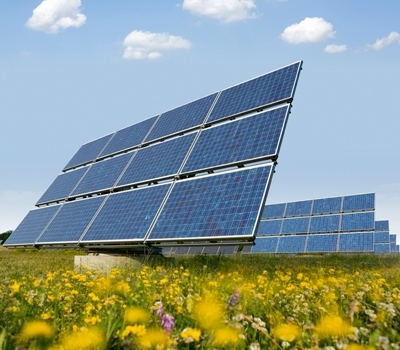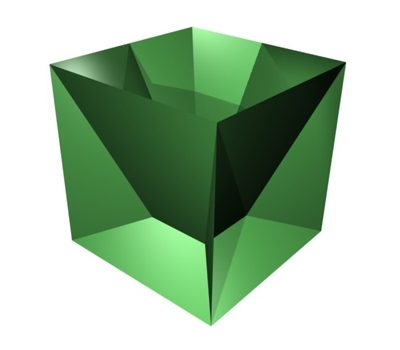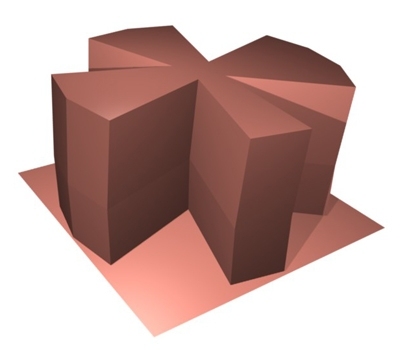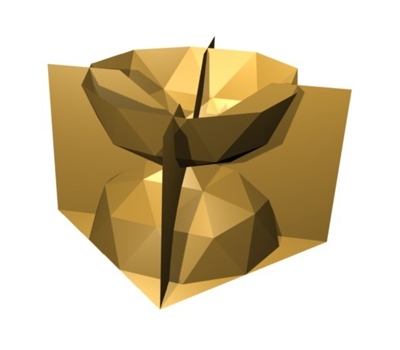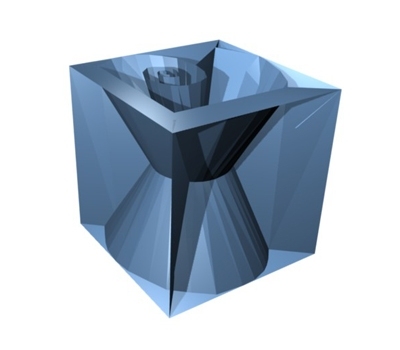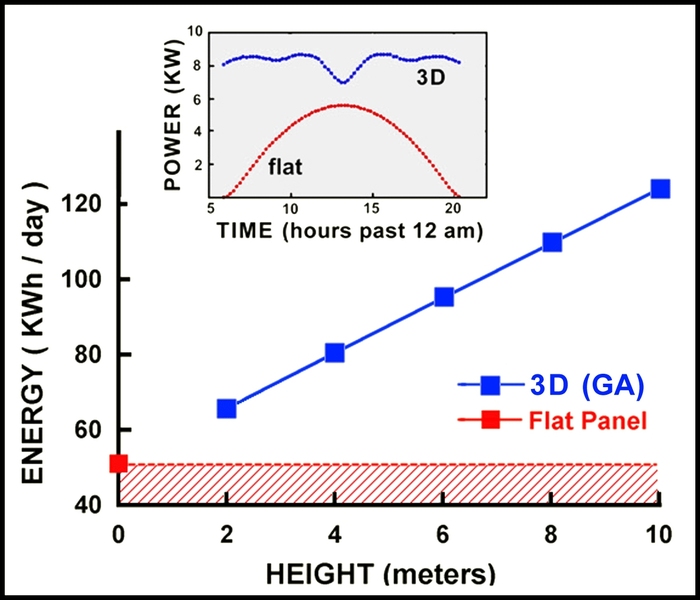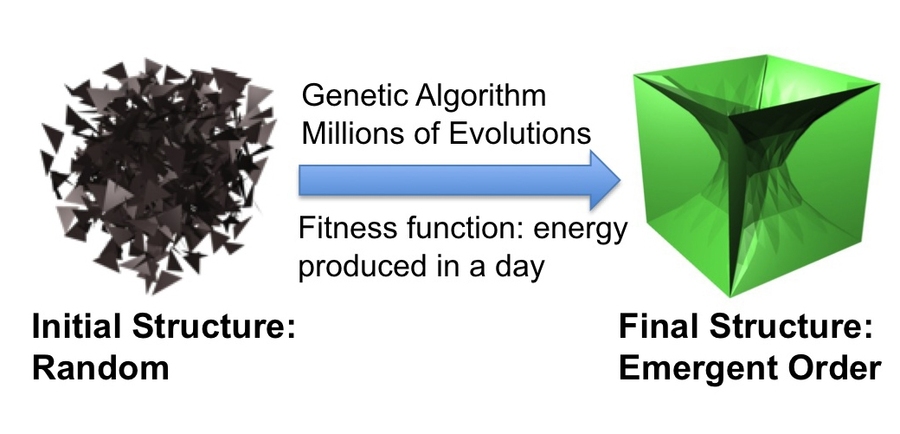Flat solar photovoltaic panels are becoming more widespread, but the power they produce varies over the course of the day as the sun’s position changes — unless the panels are mounted on tracking systems to keep them pointed sunward, which adds complexity and expense.
Jeffrey Grossman, the Carl Richard Soderberg Associate Professor of Power Engineering at MIT’s Department of Materials Science and Engineering (DMSE), was inspired by the way trees spread their leaves to capture sunlight and wondered how efficient a three-dimensional shape covered in solar cells could be, and what its optimal shape would look like. He worked with a second-year DMSE graduate student, Marco Bernardi, to create a computer program that mimics biological evolution, starting with basic shapes and letting them evolve, changing slightly each time and selecting those that perform best to start the next generation. He found that such systems could produce relatively constant power throughout the day without the need for tracking, and produce significantly more power overall for a given area — for example two and a half times as much as a flat array when the height equals the length and width. He is continuing to work on finding the best shapes and teaming up with Professors Vladimir Bulović and David Perreault (EECS) to build a prototype system. The team believes that solar panels based on this concept could be shipped flat and then unfolded at the site to their complex shapes.
These images show some of the varied shapes with improved efficiency that emerged from the evolving simulation.
Jeffrey Grossman, the Carl Richard Soderberg Associate Professor of Power Engineering at MIT’s Department of Materials Science and Engineering (DMSE), was inspired by the way trees spread their leaves to capture sunlight and wondered how efficient a three-dimensional shape covered in solar cells could be, and what its optimal shape would look like. He worked with a second-year DMSE graduate student, Marco Bernardi, to create a computer program that mimics biological evolution, starting with basic shapes and letting them evolve, changing slightly each time and selecting those that perform best to start the next generation. He found that such systems could produce relatively constant power throughout the day without the need for tracking, and produce significantly more power overall for a given area — for example two and a half times as much as a flat array when the height equals the length and width. He is continuing to work on finding the best shapes and teaming up with Professors Vladimir Bulović and David Perreault (EECS) to build a prototype system. The team believes that solar panels based on this concept could be shipped flat and then unfolded at the site to their complex shapes.
These images show some of the varied shapes with improved efficiency that emerged from the evolving simulation.
